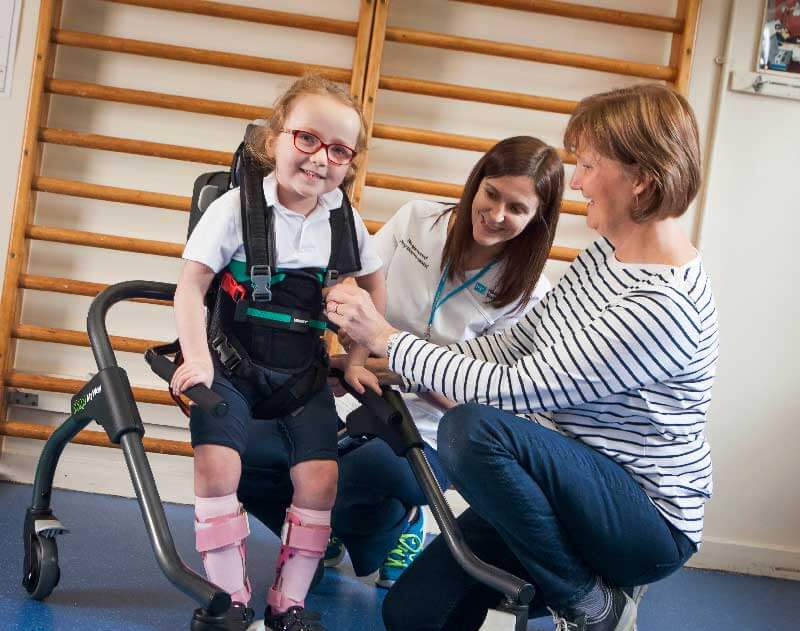Partilhar:
Take it offline!
This Education in Motion resource is also available as a printable PDF.
Descarregar PDF
As a pediatric physiotherapist, one of the most frequent questions parents ask me is, "Is my child going to walk?" Naturally, it's up there as one of the most emotive topics. The dream of seeing their child take their first steps is something that all parents hope to witness. It's a highly emotive topic for us physiotherapists, too.
As their physiotherapist, we share in the joy of those early milestones. I was always very happy when a family would return to clinic and be so excited to "show me" their little one now walking independently. But what about the children who are unlikely to ever take steps independently? As a new pediatric physiotherapist, this was something that I struggled with. No matter how much input the child received, they would always need assistance from a supportive frame. Initially it was difficult to see past all the equipment and recognize that the child was achieving their own small goals, rather than the larger therapeutic goals I had hoped for.
Standing frames are commonly prescribed when a child is around 12 months old because if they were following the typical gross motor development timeline, they would be pulling to stand and weight-bearing at that age. However, from conversations with many therapists, the next stage on (walking) isn't as closely linked with trying to match typical development. Having looked into the research, it is reported that the most common age for a child with additional needs to be prescribed a walking frame is 2-3 years old. However, it is advised that mobility assistive technologies could be introduced as early as 9-12 months old, when typically developing peers begin to explore their environment. Supportive seating and standing are widely prescribed to help children achieve their goals, but why not walking? Is walking seen as less of a priority or seen as having fewer benefits? Is the concern that supportive walking will encourage any abnormal muscle tone, and that strategies should focus on managing the tone first?
The physical benefits of walking are numerous and well documented: it improves bowel function and bone mineral density, reduces muscle contractures, enhances cardiovascular fitness, and improves mobility (Paleg and Livingstone, 2015). The ICF encourages us to also consider the wider benefits of using a walking frame on the child's social, emotional, and psychological development in equal measure. George et al (2020) surveyed the benefits, and along with the many physical benefits, there were perceived improvements in problem-solving, cognition, friendship, and communication, along with many others.

When I was in the NHS, I was guided by a manager who said, "If you feel that a child would clinically benefit from a piece of equipment, then the child should have it." This enabled me to try out lots of equipment, especially walking frames, and I got to learn what did and didn't work. It also allowed me to prescribe a walking frame for a child when it was right for them, and not have to be constrained by issues surrounding funding or time. I adopted the "we'll try and see" approach, meaning that even if a child wasn't showing all the signs that they were ready, we would try a walking frame (or two or three!) and see what they made of it. Obviously, I would consider the child's overall development and medical needs, as some children have issues that do preclude them from using a walking frame, and these should be taken seriously. However, I can't count the number of times when I wasn't sure that a child would be able to move a walking frame, but when we gave it a go, they surprised everyone!
As time went on, I became accustomed to the equipment and was able to see what a child could achieve with support, rather than focusing on the equipment required to help them do it. Now I can honestly say that seeing a child take their first steps in a walking frame is one of the most rewarding parts of my job. Being able to see them progress in their skills, from just an initial flicker of movement or that first tiny step, to being able to step and move themselves with purpose, is one of the most humbling experiences that I get to be a part of.